
The sankofa bird, which lends its name to Salim Washington’s current performing ensemble, was named in the Twi language of Ghana: “Go back and fetch it”. Or, to flesh that out into a proverb: “It is not wrong to return for those [important] things you’ve forgotten.” Sankofa is one of multiple adinkra symbols, printed on the traditional cloth of the Akan people as a stylised heart shape, and it’s easy to see the linear echoes there of the bird turning towards the egg it carries on its back. Threading through all that symbolism, the message is clear: don’t forget the things in the past that can help us unfold a better future.

I’ve often written in this blog about toxic nostalgia and how it infests our cultural landscape. Toxic nostalgia emerges when commentators resist change. You see it when Helen Zille hankers for a mythical, whitewashed, unproblematic past that never existed. You hear it when ruling-party politicians memorialise a Sharpeville without Sobukwe, or when opposition politicians erase Mandela the soldier and the armed struggle. The message of the sankofa bird is the opposite of that. Its beady eye looks back for precious, important things, but without illusions.

This week also marks the start of the anniversary period for another musical outing carrying a very similar message: it’s 20 years since Paul Hanmer gathered some musical friends together to take a Train to Taung (https://www.amazon.com/Train-Taung-Paul-Hanmer/dp/B0002TB35A ) the birthplace of humankind. Let’s look at how past and future come together in both.
Saxophonist Washington’s Sankofa outing features a quintet of musicians: another reedman in Leon Sharnick; trumpeter Sakhile Simani; pianist Nduduzo Makhathini, bassist Dalisu Ndlazi and drummer Ayanda Sikade (with a guest spot from Tumi Mogorosi). There are multiple generations there already. Though Washington is the elder statesman, let’s not forget that Makhathini and Sikade are not such youngsters either; they speak for the jazz era of Zim Ngqawana. Ndlazi, meanwhile, is very much of today: a member of the Standard Bank National Youth Jazz Band. Then there are the voices – not only young operatic voices, but the fierce poetry of Lesego Rampholokeng, now a veteran of the South African spoken word scene, but in his time a youthful prophet of ‘80s revolt with COSAW and Horns for Hondo. On this album, with Tears for Marikana, Rampholokeng brings righteously angry wordsmithing that would not have been out of place in Staffrider to bear on a too-recent atrocity: “Fire on the mountain no metaphor/But matter for more/Than just thought/Lives sold and bought/for platinum dreams…”

What else does the CD carry from then to now? Well, repertoire, and compositions that are recognizably ‘in the tradition’, for one. Washington and Makhathini originals mix with historic tracks by Rahsaan Roland Kirk. Kirk is a good choice. Not only did he write tunes that can give any reedman a joyous stretch-out, but his mission, like Washington’s was to use good music – music for grooving or celebrating – to make people think as well. This, after all, was the bandleader who could kidnap the most banal of lyrics (“I run for the bus, dear/and while running I think of us, dear”), add gunshots, and turn I Say a Little Prayer into a mournful, angry, compelling reflection on the murder of Martin Luther King (https://www.youtube.com/watch?v=-6-yhIUPyGM ).
Sankofa has compelling tunes of its own: the edgy Imlilo; the classic three-quarter-time Uh Oh with its expansive reed solos; Makhathini’s Supreme Light with its evocation of Trane, and more. That last is a live recording, taken from Sankofa’s Orbit session in January 2016, and conveys just how exciting the band is on stage.
But all these implicit acknowledgments of jazz tradition – references in both style and form, as well as the impressively tight yet flexibly empathetic playing – don’t get in the way of innovation. The track Oshun (another nod to that more distant past) uses voices in ways that challenge and stretch the boundaries between jazz, classical, traditional and sanctified vocal expression, creating rich, intriguing textures. Such music, serving for celebration, intellectual inquiry and social critique takes us right back to those court and community griots across Africa; the best of whom were never – ever – merely “praise singers.” And the best of them, like the Sankofa crew, still aren’t.

Asserting that the old could also be startlingly new was equally pianist Paul Hanmer’s mission when, in 1997, he brought together guitarist Louis Mhlanga, drummers Neil Ettridge and the late Jethro Shasha, bassists Dennis Lalouette and Andre Abrahamse, and percussionist Basie Mahlasela for the album they christened Trains to Taung. What Hanmer’s imagination drew from the most distant of pasts was precisely those ‘dreams of forbidden landscapes’ that I wrote about a few weeks past (https://sisgwenjazz.wordpress.com/2017/07/17/let-us-dream-you-forbidden-landscape-the-storming-project-sings-change/ ).

Taung was both a place where the earliest people came together, and the place from which they dispersed across the world: a place of Africa, not merely of the colonially-boundaried ‘South Africa’. That’s heard in the pan-Africanism of personnel and idioms: Mhlanga’s Zimbabwe-meets West Africa guitar; Mahlasela’s universal percussion; Shasha’s encyclopedia of drum styles and sounds (https://www.youtube.com/watch?v=2IpmU5kzd7c ). Women were central to those early societies; their meetings were praised (https://www.youtube.com/watch?v=CozAQpN3xsE ). And yet that train was also the engine of travel, and change, and in its isitimela incarnation, suffering and separation, in the more modern history of Southern Africa. All those imaginings were on that album, which went on to be one of the longest-lived of the post-liberation jazz releases. It was also possibly the first ‘crossover’ success; not in the sense that it diluted genres, but in the sense that its discourse defied borders, in the very same way those earliest travelling humans did.
Trains to Taung gets its first 20th anniversary celebration at the Orbit on Friday July 28th, but there will be more…




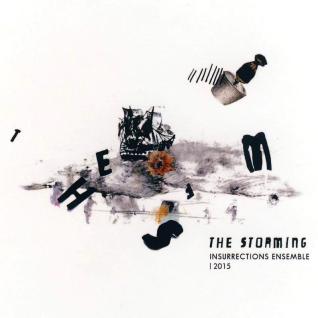
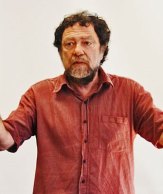
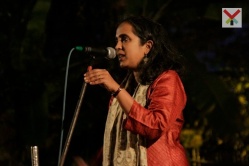
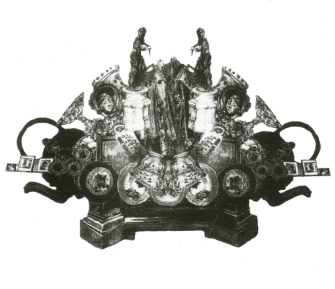
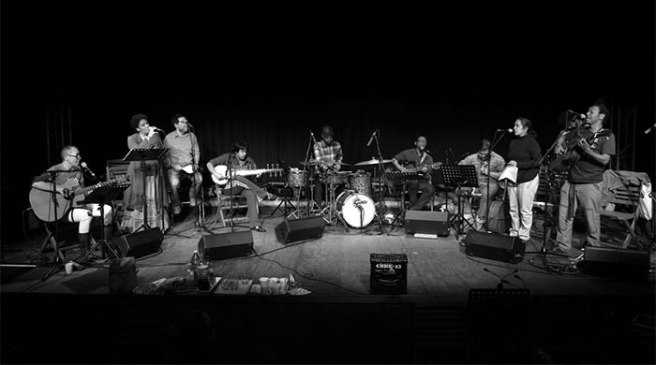
 If any words summed up the work of Raymond Chikapa Enoch Phiri, who died of lung cancer on Wednesday, aged 70, in his birthplace, Nelspruit, it was those. They come from the 1986 song he co-wrote with the Ashley Subel: Whispers in the Deep (
If any words summed up the work of Raymond Chikapa Enoch Phiri, who died of lung cancer on Wednesday, aged 70, in his birthplace, Nelspruit, it was those. They come from the 1986 song he co-wrote with the Ashley Subel: Whispers in the Deep (











